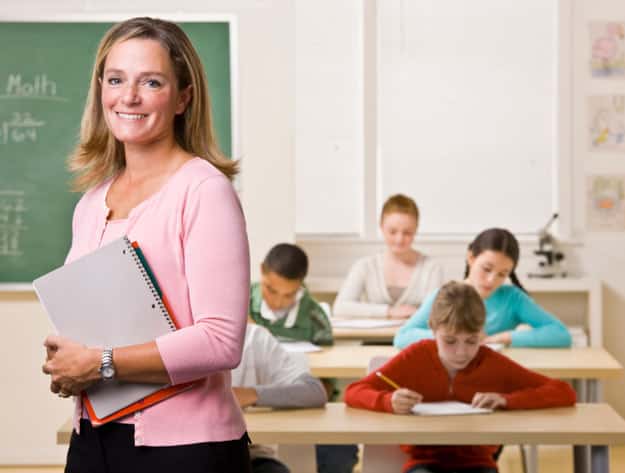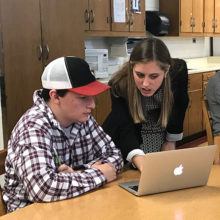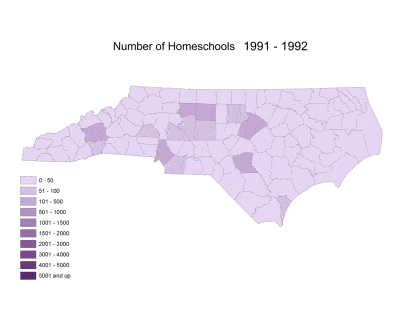Another 6,849 families in North Carolina decided to homeschool their children this past school year, bringing the total number of homeschools to 74,653. Parents opt out of the public school system for a variety of reasons, but in the most recent National Household Education Survey (2012), dissatisfaction with public schools overtook the desire to provide religious or moral instruction as parents’ most important reason for homeschooling. If public schools want to retain their students, it’s time to take a hard look at why parents are dissatisfied. After speaking to several homeschool parents, a common theme emerged: parents and students want an individualized learning experience.
“I was finally able to move at my own pace”
Jessica is a mom of ten from Granite Falls. She graduated from a homeschool and now homeschools all of her children. Initially, Jessica resisted when her mom told her she was going to be homeschooled her junior and senior years of high school. She didn’t want to miss all the school activities — band, sports, prom — but just two weeks of homeschooling sold her on the idea.
“I was always very bored in school, always waiting on the other kids,” she said. “I would often be put in gifted or accelerated learning classes that were only supplemental. Those were the only times there was anything in school that really challenged me.”
All that changed when she started homeschooling. Finally able to move at her own pace, she completed her junior and senior years of high school in one year. She had more free time and freedom to pursue outside interests, which more than made up for the school activities she missed. After this experience, Jessica didn’t consider anything else for her children. Her husband fully supported her, even though homeschooling was new to him.
Homeschooling 10 children is “crazy busy.” Jessica told me, “I think last year I was doing 30 something different subjects between the different kids.” To manage the workload, she groups her youngest kids together for history and science lessons while the older ones work on research projects. Her high schoolers follow individualized lesson plans and meet with her two to three times a week to discuss their progress. At night, after the youngest have gone to bed, Jessica works with her junior on SAT prep.
Despite the busy schedule, Jessica doesn’t plan to enroll any of her children in public school. Allowing her children to learn at their own pace and pursue their own interests is worth the hectic schedule.
“I have the freedom to tailor the experience to my kids’ strengths”
Karen decided to homeschool her children after trying both public and private schools. She pulled her son out of private school in February, a couple months after he was diagnosed with Type I diabetes. Her daughter finished the year and will start homeschooling this year.
Her son’s diagnosis motivated Karen to begin homeschooling but is not the reason she removed him from public school. He first attended a magnet school that was billed as a gifted and talented magnet where students who exempted from certain subjects could attend enrichment electives. Within his first two years, the electives were cut, several teachers quit, and the school had six different principals in four years. Eventually, Karen and her husband switched him to their local public school, where he had a great fourth grade year.
The problems began in fifth grade. In math, they did one review worksheet after another to prepare for testing. Her son hated these worksheets. Although they didn’t know it at the time, his Type I diabetes made it hard for him to focus. The school began to take away recess, then music, then reading club as punishment to try and make him do the math worksheets. At home, Karen pleaded with her son every night to do the worksheets. However, when they took away all the clubs, she pulled him out and homeschooled him for the rest of the year.
Her son and daughter started at a private school the next year even though it was a financial stretch for Karen and her husband. They both did great for a couple of years until her son’s diagnosis. Karen pulled her son out of school in February to homeschool him, and her daughter will start this school year.
So far, homeschooling has been a good experience for Karen and her son. They’ve gotten involved with the local home school associations, which have been very supportive. She even started a group for homeschoolers with Type I diabetes.
Karen’s daughter can’t wait to start homeschooling this year. Karen agonized about whether or not to homeschool her daughter because she didn’t want her to be sheltered. In the end, she decided to go for it. She told me, “Even though her private school was excellent, there were certain things they wanted mastered before other things. I understood why they did that, but it can’t always work for everyone. Now I have a lot more freedom to tailor the experience to my kids’ strengths.”
“Less assigned homework and more learning about his own interests”
Brad and his wife began homeschooling their son midway through his kindergarten year. Their son has always been a fast learner. He started reading around his third birthday, and by the time he entered kindergarten, he was reading story books.
After three months in kindergarten, he started to withdraw and completely stopped reading, telling his parents that kindergarteners shouldn’t read. According to Brad, he had received the message at school that kindergartners weren’t supposed to know how to read yet. As a result, he felt alienated and different from his classmates, so he stopped reading.
Brad pulled his son from kindergarten and both he and his wife started working with him at home. At first they just tried to get him reading again. After about a month, he began to read. They continued to homeschool him through the seventh grade.
In eighth grade, Brad’s son wanted to re-enroll in public school. He started the Leap program, which was a program for about 40 advanced eighth graders in the district. Brad said the program, “teaches the four academic subjects essentially two years ahead, and that was a great environment for him.” Additionally, Brad loved the middle school environment, describing it as a “wonderfully managed place with a no-bullying environment.”
Brad’s son started eighth grade in the public high school but decided quickly that he wanted to go back to homeschooling. Without the Leap program, his classes were too easy and he had too much homework. Back at home, he spends less time on homework and more time learning about his interests.
Moving away from the factory model of schooling
These stories only represent three families’ experiences, but the theme emerging from them is clear. In each of their stories, these families chose a more individualized approach that lets the students be the drivers of their own learning. Parents want the type of education they choose for their child to be a good fit.
Some schools are already moving towards a personalized learning approach. In David Osborne’s report, “Schools of the Future: California’s Summit Public Schools,” the CEO of Summit Public Schools explains their belief in personalized learning:
“The industrial model is really driven by adults… Kids come in, they’re told where to go, where to sit, what they’re going to learn, when they’re going to learn it. You’re on the assembly line. We believe the next generation models are about the students being empowered to drive their own learning.”
Technology has enabled schools to move towards more personalization. I experienced this firsthand as a teacher in New Orleans. For the majority of the day, my students attended traditional classes. For one hour each day, however, every student from kindergarten to eighth grade did lessons online in math and reading. These lessons were tailored to the individual student’s needs. If one of my sixth graders was on a fourth grade reading level, she would be doing fourth grade reading lessons during that hour to help her catch up. At the same time, another student reading at an eighth grade level would be working on eighth grade reading lessons.
As gains in technology allow schools to adopt a personalized approach, it may be time to rethink the industrial model. If successful, this approach could make public schools attractive for homeschool parents and students who want an individualized learning experience.



